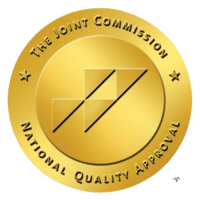Understanding the nuances of how long Percocet remains detectable in saliva is not only relevant for clinical purposes but also essential for individuals subject to drug monitoring. While the standard detection window is generally 24 to 48 hours post-ingestion, various factors can extend or shorten this period. These include the individual’s metabolic rate and unique physiological characteristics. The implications of these variables are significant, especially for those in addiction recovery or involved in compliance testing. What are the intricacies that make saliva testing a preferred method for detecting recent drug use?
Understanding Percocet and Its Use
Percocet is a prescription medication that combines oxycodone, an opioid analgesic, and acetaminophen, a non-opioid pain reliever. This formulation is utilized primarily in pain management protocols to alleviate moderate to severe pain. Oxycodone, a semisynthetic opioid, interacts with specific receptors in the central nervous system to alter the perception of pain, whereas acetaminophen augments pain relief via peripheral mechanisms. It is critical to recognize that while Percocet is effective for pain management, its potential for misuse is significant, given the euphoric effects associated with oxycodone. Saliva-based tests for Percocet offer insights into the concentration of the drug in the body, offering a potentially less invasive testing method.
The risk of Percocet addiction is heightened with prolonged or inappropriate use. Data indicates that the opioid component can lead to physical dependence, characterized by withdrawal symptoms upon cessation. Additionally, acetaminophen’s hepatotoxicity risk necessitates careful dosage monitoring. Physicians must exercise caution, adhering to evidence-based prescribing guidelines to minimize the potential for addiction and adverse effects. Understanding the pharmacokinetics of Percocet is essential for optimizing outcomes while mitigating risks, underscoring the importance of patient education and monitoring throughout the treatment course.
Saliva Drug Testing Explained
Understanding the pharmacokinetics of medications like Percocet is essential in clinical practice, especially when considering the detection of substances through drug testing methods. Saliva testing has emerged as a non-invasive, rapid method for drug detection, offering advantages over traditional blood and urine tests. This method analyzes oral fluid, which contains parent drugs and metabolites, providing a reflection of recent substance use. Saliva testing operates on the principle of detecting drug compounds that diffuse from the bloodstream into the oral cavity. Detection involves the collection of oral fluid, analyzed using techniques for their sensitivity and specificity.
One advantage of saliva testing is its utility in detecting recent drug use, as substances typically appear in saliva within minutes to a few hours following ingestion. The concentration of drugs in saliva is often correlated with their unbound plasma levels, making this method effective for detecting drugs like oxycodone. Despite its benefits, saliva testing may be influenced by factors such as oral hygiene, pH, and salivary flow rate, which can affect the detection window and substance concentration.
Detection Window for Percocet
The detection window for Percocet in saliva is relatively short, typically ranging from 24 to 48 hours post-ingestion. This timeframe is influenced by the drug’s pharmacokinetics and the rapid absorption of its active ingredients. As the drug circulates, its effects manifest, including analgesia, euphoria, and sedation. Saliva drug testing serves as a non-invasive method to detect recent Percocet use, capitalizing on the presence of drug metabolites. Sophisticated analytical techniques such as LC-MS/MS are employed to ensure precise detection within the specified window.
Clinicians and forensic toxicologists utilize this window to assess compliance with medication regimens or identify illicit use. The short detection period for Percocet in saliva reflects its rapid clearance, necessitating timely sample collection following ingestion. Understanding the detection window is critical in both clinical and legal contexts, where accurate substance use assessment is paramount.
Factors Influencing Detection Time
Several variables can prominently influence the detection time of Percocet in saliva, necessitating a nuanced understanding of its pharmacokinetic profile. The primary factors include metabolic rate, dosage, frequency of use, and physiological characteristics. Individuals with a higher metabolic rate may exhibit a reduced detection window due to expedited drug clearance, while chronic use can extend the detection period. Accurate detection is essential when monitoring individuals for compliance and withdrawal symptoms.
The dosage and formulation of Percocet impact its detectability. Higher doses correlate with prolonged presence in the saliva, whereas immediate-release formulations may clear more rapidly. Individual factors such as age, body mass, and overall health can modulate the detection time, with older individuals or those with compromised liver function potentially experiencing longer retention. Understanding these variables aids healthcare professionals in designing personalized treatment regimens for patients in addiction recovery settings. For more information on treatment options, visit our programs page.

Final Thoughts
The detection of Percocet in saliva typically spans 24 to 48 hours post-ingestion, contingent on variables such as metabolic rate and dosage. Saliva drug testing targets metabolites in oral fluids, pinpointing recent substance use. Accurately evaluating this timeframe is imperative for adherence to recovery protocols and compliance with monitoring programs. Understanding pharmacokinetics is crucial in clinical and monitoring contexts. For detailed insights into our treatment modalities, check out BlueCrest Detox Treatment Modalities.
At BlueCrest Detox, we’re dedicated to elevating you from the struggles of substance use to the peaks of recovery and resilience. Our expert team offers personalized, evidence-based treatment services tailored to support your unique journey toward healing. Reach out to us for the compassionate care you deserve on your path to wellness. Follow us on Facebook for ongoing support, insights, and inspiration on your recovery journey.
Frequently Asked Questions
Can Secondhand Smoke From Percocet Affect Saliva Drug Test Results?
Current research does not provide conclusive evidence regarding secondhand exposure to Percocet and its effect on saliva drug test results. The risk of saliva contamination from secondhand smoke is generally considered minimal due to the low concentration of active compounds in exhaled smoke. However, environmental factors and proximity to the source can potentially influence the extent of exposure. Further studies are necessary to ascertain the impact of such exposure on saliva-based testing.
Is It Possible to Speed up the Removal of Percocet From Saliva?
The acceleration of Percocet removal from saliva is not achieved through traditional saliva detox methods. Drug metabolism is primarily driven by the body’s natural processes, including liver function, which breaks down substances over time. While hydration and oral hygiene may contribute marginally, no scientifically validated method exists to expedite metabolism. Understanding these limitations is essential for individuals considering detoxification strategies in drug testing scenarios.
How Does Hydration Impact Percocet Detection in Saliva Tests?
Hydration effects on Percocet detection in saliva tests are limited in efficacy. While increased water intake may contribute to saliva dilution, it is unlikely to markedly alter test outcomes for detecting opioids like Percocet. Saliva tests are designed to identify specific metabolites, and their sensitivity is not easily circumvented through hydration alone. Attempting to influence test results by merely increasing fluid intake is generally ineffective and unreliable.
Are There Any At-Home Saliva Tests for Detecting Percocet?
At-home testing for Percocet via saliva collection is increasingly feasible due to advancements in diagnostic technology. These tests are designed to detect the presence of oxycodone, a key component of Percocet, in saliva. They offer a non-invasive, convenient alternative to laboratory testing, providing quick results. However, the sensitivity and specificity of these tests vary, hence it is recommended to use them as screening tools complemented by laboratory confirmation.
Can Prescription Medications Alter Percocet Saliva Test Results?
Prescription medications can indeed alter the results of a Percocet saliva test due to medication interactions. When following prescription guidelines, certain drugs may interfere with the metabolites of oxycodone, potentially leading to false positives or negatives. Healthcare professionals should be consulted to evaluate possible interactions and guarantee accurate test interpretation, thereby optimizing treatment strategies and maintaining patient safety.




